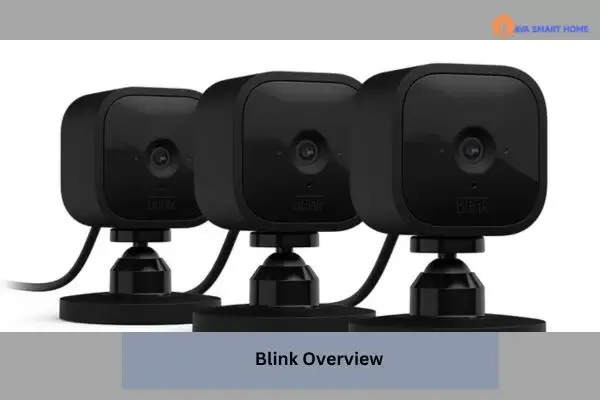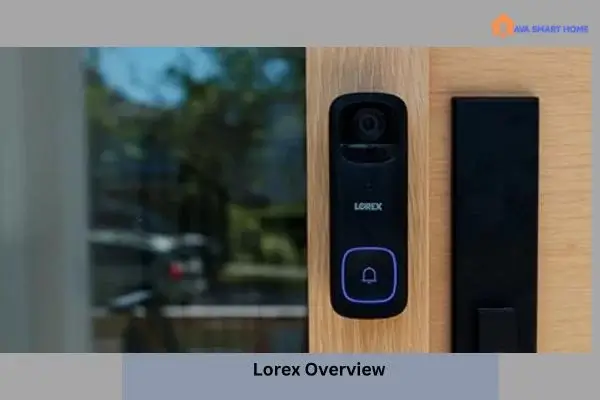Blink vs Lorex are both popular brands in the home security camera market, offering various models and features to meet different surveillance needs. Below is an overview of the differences and features of Blink and Lorex cameras, as well as the pros of Blink cameras:
Table of Contents
ToggleBlink Overview
Blink is known for its wireless, battery-powered cameras that are designed for easy installation and flexibility. They are best suited for homeowners who want a simple and affordable DIY security camera system.

Lorex Overview
Lorex, on the other hand, offers a wide range of security camera systems, including wired and wireless options, with more advanced features. Lorex is suitable for users looking for a comprehensive and customizable surveillance solution.

Related: Google Nest Camera vs Arlo: Which is The Best For You?
Differences between Blink and Lorex
-
Video Resolution:
- Blink: Blink cameras typically offer 720p or 1080p resolution, which is suitable for general surveillance needs but may not provide the highest level of detail.
- Lorex: Lorex offers a wider range of resolutions, including 1080p, 2K, and 4K, which can capture more detailed footage.
-
Two-Way Audio:
- Blink: Some Blink camera models offer two-way audio, allowing you to communicate with people near the camera.
- Lorex: Many Lorex cameras come with two-way audio, which can be useful for both security and communication purposes.
-
Infrared Night Vision:
- Blink: Blink cameras feature infrared night vision for capturing clear footage in low-light conditions.
- Lorex: Lorex cameras also offer infrared night vision, and some models provide color night vision for improved visibility in the dark.
-
Power Cords and Battery Options:
- Blink: Blink cameras are known for their battery-powered operation, which eliminates the need for power cords in most cases.
- Lorex: Lorex offers both wired and wireless camera options, so you can choose between power cords or battery operation depending on your preference and installation location.
-
Smart Features:
- Blink: Blink cameras are relatively simple and offer basic motion detection and smartphone alerts.
- Lorex: Lorex cameras often come with more advanced smart features, such as AI-based motion detection, person detection, and customizable alerts.
-
Person Detection and False Alarm Prevention:
- Blink: Some Blink cameras offer person detection, helping reduce false alarms triggered by non-human motion.
- Lorex: Lorex cameras often feature advanced AI algorithms for person detection and more accurate alerting.
-
Cloud Recording and Video Storage Options:
- Blink: Blink offers cloud storage plans for video recording, but they have limited retention options and may require a subscription.
- Lorex: Lorex provides various storage options, including local storage on NVRs (Network Video Recorders) and cloud storage, with longer retention periods.
Blink vs Lorex: Pros and Cons
Pros of Blink Cameras:
- Easy DIY installation with wireless, battery-powered cameras.
- Affordable pricing for basic home security needs.
- Compact and portable design.
- Integration with Amazon Alexa for voice control.
- Suitable for renters due to the lack of wiring requirements.
Cons of Blink Cameras
- Blink cameras typically offer 720p or 1080p resolution, which may not provide the highest level of detail compared to cameras with higher resolutions, especially for larger areas or more distant subjects.
- Blink cameras are designed to be simple and user-friendly, which means they may lack advanced features such as AI-powered motion detection, person detection, or advanced alert customization that you can find in some other brands.
- Some Blink camera models may have a narrower field of view
Keep in mind that the choice between Blink and Lorex depends on your specific needs and budget. Blink is more suitable for users seeking a straightforward and budget-friendly solution, while Lorex offers a wider range of features and customization options for users with more extensive surveillance requirements.
Pros of Lorex Cameras:
- Higher Video Resolutions: Lorex offers a broader range of camera models with higher resolutions, which can provide clearer and more detailed video footage.
- Advanced Smart Features: Lorex cameras often come with more advanced smart features, such as AI-powered motion detection, person detection, and customizable alert settings, enhancing the accuracy of notifications.
- Customization: Lorex offers a variety of camera types (wired, wireless, PTZ, etc.) and accessories, allowing you to build a surveillance system tailored to your specific needs.
- Expandability: Lorex systems are often scalable, allowing you to add more cameras and devices as your security needs evolve.
- Local Storage Options: Lorex frequently includes local storage options with NVRs, which can be more cost-effective in the long run compared to cloud storage subscriptions.
- Color Night Vision: Some Lorex cameras offer color night vision, which can provide more detailed and accurate footage in low-light conditions.
Cons of Lorex Cameras:
- Higher Cost: Lorex cameras and systems tend to be more expensive than Blink, especially when considering high-resolution cameras and NVRs.
- Complex Installation: Wired Lorex systems may require professional installation due to the wiring involved, which can add to the overall cost.
- Potential for False Alarms: Advanced motion detection can sometimes lead to false alarms, especially in outdoor environments with changing lighting conditions.
- Power Requirements: Wired Lorex cameras need a constant power source, which can limit placement options and require additional wiring.
- Learning Curve: Lorex systems with advanced features may have a steeper learning curve for users who are not tech-savvy.
In summary, Blink is a budget-friendly and user-friendly option for basic home security needs, particularly for those who prefer a simple, wireless setup. On the other hand, Lorex offers a wider range of features, higher resolutions, and advanced smart capabilities, making it suitable for users who require a more comprehensive and customizable surveillance solution, even if it comes at a higher price point.
When choosing between Blink and Lorex, consider your specific requirements, budget, and willingness to invest in more advanced features and installation. It’s also a good idea to read reviews and compare specific camera models from both brands to find the one that best aligns with your needs.
Consider Blink If:
- You’re on a Budget: Blink is a more cost-effective option for basic security needs. It’s an excellent choice if you want to set up a few cameras without breaking the bank.
- DIY Installation: If you prefer a hassle-free, DIY installation process without dealing with wires and cables, Blink’s wireless battery-powered cameras are a convenient choice.
- Simple Monitoring: Blink is ideal for users who want straightforward video monitoring without advanced features and customization. It provides essential security without unnecessary complexity.
- Renting or Moving Frequently: Blink’s portability and wire-free design make it suitable for renters or those who plan to move since it doesn’t require permanent installation.
Consider Lorex If:
- Advanced Features: If you desire advanced features like higher resolution, AI-powered motion detection, person detection, and customizable alerts, Lorex is a better choice.
- Comprehensive Surveillance: For users with more extensive surveillance needs, such as monitoring large properties, Lorex offers a wide range of camera types and expandability options.
- Customization: Lorex allows you to build a surveillance system tailored to your specific requirements, including both wired and wireless cameras.
- Local Storage: If you prefer local storage options or want to avoid monthly cloud storage fees, Lorex often includes NVRs with its systems.
- Professional Installation: While Lorex offers wireless options, it’s also suitable for users willing to invest in professional installation for wired systems, ensuring optimal performance.
Blink vs Lorex
Ultimately, the choice between Blink and Lorex comes down to your budget, the level of security and surveillance you need, and your willingness to invest in advanced features and installation. It’s essential to carefully evaluate your specific requirements, read reviews, and compare individual camera models and packages from both brands to make an informed decision that best suits your home security needs.
Scalability: If you anticipate expanding your security system in the future, consider how each brand accommodates scalability. Lorex systems are often more flexible and allow for the addition of multiple cameras and devices as your security needs grow. Blink, while suitable for basic setups, may have limitations in terms of expandability.
Integration with Other Smart Devices: Consider whether you already have other smart home devices or plan to integrate security cameras with existing smart home systems. Both Blink and Lorex offer integration with various platforms like Amazon Alexa and Google Assistant, but Lorex may provide more extensive compatibility and potential for automation.
Mobile App and User Experience: Evaluate the user interface and mobile app experience for both brands. The ease of use, responsiveness, and availability of features in the mobile app can significantly impact your day-to-day experience with the security system.
Customer Support and Warranty: Research the customer support options and warranty policies for both Blink and Lorex. It’s essential to know that you can rely on prompt assistance in case of technical issues, and understanding the warranty coverage can be crucial for long-term peace of mind.
Local Regulations and Recording Laws: Be aware of any local regulations or laws regarding video surveillance and recording in your area. Compliance with privacy laws and data protection regulations is essential when setting up security cameras.
Power Source and Backup: Consider the availability of power sources and backup options. While Blink is primarily battery-powered, Lorex offers both wired and wireless options. If power outages are a concern, you may want to explore battery backup or uninterrupted power supply (UPS) solutions for Lorex cameras.
Cloud Storage Costs: If you opt for cloud storage for video recording, carefully review the pricing structures and subscription options for both brands. Understand the costs associated with storing your footage in the cloud over time.
Environmental Considerations: Think about the environmental conditions in which the cameras will operate. Both Blink and Lorex offer weather-resistant models, but if your location experiences extreme weather conditions, ensure the cameras are suitable for those conditions.
User Reviews and Recommendations: Finally, consult user reviews and seek recommendations from friends, family, or online communities who have experience with Blink and Lorex cameras. Real-world experiences can provide valuable insights into the reliability and performance of these products.
In conclusion, the decision between Blink and Lorex should be based on a comprehensive assessment of your specific requirements, budget, expandability needs, and desire for advanced features. Take the time to compare individual camera models, read reviews, and consider long-term factors such as scalability and ongoing costs to make an informed choice that aligns with your home security goals.










